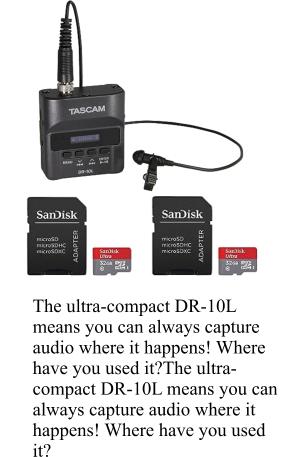
- MozSaad
- August 25, 2023
Audio recording with a laptop has become increasingly popular in recent years due to its convenience and accessibility. However, there are common mistakes that can compromise the recording quality. In this article, we will discuss some of the mistakes I made while recording audio with a laptop and provide suggestions on how to avoid them.
Mistake 1: Poor microphone placement
One of the mistakes I made was placing the microphone too far away from the sound source. This resulted in a low volume and poor clarity of the recorded audio. To avoid this mistake, it is essential to position the microphone close to the sound source and adjust the microphone sensitivity accordingly. This will ensure that the audio is captured accurately and with optimal quality.
Mistake 2: Background noise interference
Another mistake I made was not considering the background noise while recording. Background noise such as traffic, air conditioning, or people talking can significantly affect the quality of the recorded audio. To minimize background noise interference, it is crucial to choose a quiet recording environment and close any windows or doors that might let unwanted noise in. Additionally, using a noise-cancelling microphone or applying noise reduction techniques during post-production can help improve audio quality.
Mistake 3: Inadequate monitoring
I also failed to properly monitor the audio while recording. Without monitoring, it is difficult to detect any issues or distortions in real-time. To avoid this mistake, it is recommended to use headphones or monitor speakers to listen to the audio during the recording process. This allows for immediate feedback and enables adjustments to be made if necessary, resulting in better audio quality.
Mistake 4: Choosing the wrong recording software.
Selecting the wrong recording software was another mistake I made. Not all recording software is created equal, and using inappropriate or low-quality software can negatively impact the audio recording. It is essential to research and choose reliable and user-friendly recording software that suits your specific needs. This will ensure a smoother recording process and higher-quality audio output.
Mistake 5: Neglecting post-production.
Lastly, I neglected the importance of post-production in audio recording. Post-production involves editing, equalizing, and enhancing the recorded audio to achieve the desired sound quality. Not applying post-production techniques can leave the audio sounding raw and unprofessional. To avoid this mistake, it is crucial to invest time in learning basic audio editing techniques or consider outsourcing the post-production process to a professional audio engineer.
What if I want to voice over for an audio book, should I use a lavalier microphone?
Even though I was using a lavalier microphone, the quality of the recording is not up to professional standards, especially if I want to voice over. The lavalier microphone, also known as a lapel microphone, is a small microphone that is attached to the clothing of the speaker. It is commonly used in interviews, presentations, and video productions where mobility is required.
However, lavalier microphones are not generally designed for professional voice over work. They are primarily intended for capturing speech in close proximity to the speaker, rather than capturing high-quality audio for post-production purposes.
When it comes to voice overwork, it is important to have a microphone that can accurately capture the nuances and details of the voice. Professional voice-over microphones, such as condenser microphones, are specifically designed to provide a high level of audio fidelity, capturing the full range of frequencies and nuances in the voice.
The lavalier microphone, on the other hand, may not have the same level of sensitivity and frequency response as a professional voice-over microphone. This can result in a recording that lacks clarity, depth, and overall quality. The audio may sound muffled or lacking in detail, which can be problematic when trying to deliver a professional voice over.
To achieve a higher level of recording quality for voiceover work, it is recommended to invest in a dedicated voice-over microphone. These microphones are designed to capture the full range of frequencies and nuances in the voice, providing clear and professional-sounding recordings. Additionally, using a pop filter and a microphone stand can further improve the recording quality by reducing unwanted background noise and ensuring consistent positioning of the microphone.
In conclusion, while a lavalier microphone may be suitable for certain applications, it may not provide the level of recording quality required for professional voice over work. Investing in a dedicated voice-over microphone, along with proper accessories, can significantly improve the overall quality of the recordings and enhance the professional appeal of the voice-over work.
What if I am on a budget, which microphone should I choose between lavalier microphone and condenser?
If you are on a budget and considering purchasing a microphone, it’s important to weigh your options and choose the best one for your needs. Two popular choices are lavalier microphones and condenser microphones. Both have their advantages and disadvantages, so let’s explore which one might be more suitable for you given your budget constraints.
Lavalier microphones, also known as lapel microphones, are small, discreet microphones that can be clipped onto clothing. They are commonly used in situations where the speaker needs to be hands-free, such as during presentations, interviews, or video recordings. Lavalier microphones are typically omnidirectional, meaning they capture sound from all directions. This can be beneficial in capturing ambient sounds or when multiple speakers are involved. They are also often powered by batteries, which can be convenient for on-the-go recording.
On the other hand, condenser microphones are known for their high sensitivity and capturing detailed audio. They are commonly used in professional studios for recording vocals, instruments, and podcasts. Condenser microphones require phantom power, which means they need an external power source, such as an audio interface or mixer, to operate. They are typically more sensitive to sounds coming from the front, making them ideal for solo recordings or situations where you want to isolate specific audio sources.
When it comes to pricing, lavalier microphones generally tend to be more affordable compared to condenser microphones. This is mainly due to the difference in technology and the intended uses. Lavalier microphones are designed for convenience and mobility, whereas condenser microphones are engineered for high-quality audio recording in controlled environments.
If you are on a tight budget, a lavalier microphone might be the more suitable option for you. They are often priced competitively and can still deliver decent sound quality for your needs. However, if you are primarily focused on achieving professional-level audio recordings or have a dedicated space for recording, investing in a condenser microphone could provide better results in terms of clarity and detail.
Ultimately, the choice between a lavalier microphone and a condenser microphone depends on your specific requirements, intended use, and available budget. Consider your recording environment, the type of content you will be creating, and your long-term goals before making a decision. Remember to check reviews, compare prices, and consult professionals or experienced users to make an informed choice that suits both your budget and your audio recording needs.


